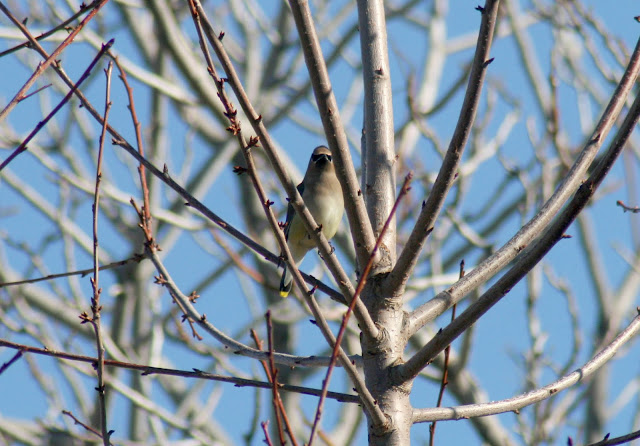My Brother in Law Frank Clawson and I got out to Antelope Island for a wonderful day of viewing nature. We both added a new life bird to our life lists and had a great time watching all Antelope Island has to offer.
 |
| Eared Grebe Left and Horned Grebe on the right |
Every year during migration we seem to get an invasion of rare or uncommon birds along the Causeway at Antelope Island. a couple of years ago we had a good number of Bonapart's Gulls and Sabines Gulls, we often get quite a few Whimbrel, a couple of years ago we had nearly a dozen Long-tailed Ducks, Surf Scoters and White-winged Scoters. We occasionally see Horned Grebes but this year seems to be the invasion of Horned Grebes.
 |
| Horned Grebe |
Harlequin Duck one female is not exactly and invasion but a very rare and exciting bird for the Great Salt Lake
 |
| Here is a vary rare find at the Great Salt Lake a female Harlequin Duck |
 |
| This little girl has created quite a stir and has been the main attraction on the Causeway for about 2 weeks now. I finally got out today to see her and add the Harlequin duck to my Life List |
 |
| This Female Brewer's Blackbird was very tame |
 |
| I noticed while processing these pictures that it looks like she has an abbess on her left leg, I hope she'll be ok |
 |
| Monarch Butterfly |
This Monarch Butterfly looks pretty haggard but still beautiful
 |
| Painted Lady Butterfly |
 |
| Western Meadow Larks were everywhere and quite active today |
 |
| Sage Thrasher |
 |
| Sage Thrasher |
 |
| Loggerhead Shrike |
 |
| These White Pelicans were putting on quite a show, they got up off the Great Salt lake and circled caught the thermals. |
 |
| A view of the Wasatch Mountains from Antelope Island. Up until a week ago we were enjoying tempratures in the mid 80s Last week storms came in and now the the mountains are snow capped. |
 |
| A shot of the Causeway |
 |
| Not a bird but a rare and beautiful migrant passing through from Wisconsin. The Great Salt Lake attracts all kinds on migrants |
 |
| There were four Coyotes down on the shore and wading in the shallows probably looking for sick waterfowl and wading birds. |
 |
| There were a lot of Bison grazing right on the edge of the road and seemed to pay no attention to the passing cars |
Here are some of the birds we saw at the Ranch
 |
| Great Horned Owl |
 |
| The Northern Flickers were very active and vocal This female stopped long enough to get her picture taken |
 |
| the area around the spring was alive with Hermit Thrush this one and the one in the next picture seemed as interested in me as I was in them. |
Other birds seen
Ruddy Duck
Northern Shoveler
Western Grebe
California Gull
Ring-billed Gull
American Avocet
Black-necked Stilt
Killdeer
Northern Harrier
Common Raven
Black-billed Magpie
White-crowned Sparrow
American Goldfinch
American Coot
Barn Swallow
Cliff Sallow
Tree Swallow
Brown-headed Cowbird
Ruby-crowned Kinglet
Wilson's Warbler
California Quail
Orange-crowned Warbler
Yellow-rumped Warbler
Dark-eyed Junco Oregon race 1st of the season
Heard but not seen
Ring-necked Pheasant
Cedar Waxwing








































































